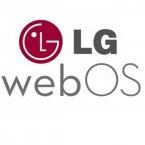-
Similar Topics
-
By News Reporter
Company Supplies State-of-the-art Multi VTM i System to Landmark Commercial
Project, Strengthening HVAC Leadership in Southeast Asia
SEOUL, Apr. 3, 2025 — LG Electronics (LG) has supplied its state-of-the-art Multi VTM i, a variable refrigerant flow (VRF) solution featuring an advanced AI engine, to a newly constructed 59,800-square-meters logistics center in the Singapore’s Tuas area. This milestone project underscores LG’s commitment to expanding its heating ventilation and air conditioning (HVAC) business in Southeast Asia.
To achieve the highest level of the Building and Construction Authority’s Green Mark certification program – specifically the Green Mark Platinum (Super Low Energy) rating – the logistic center required an exceptionally efficient and comprehensive HVAC solution. LG distinguished itself by presenting a tailored package that optimally meets the client’s specific needs. To further enhance the already outstanding performance and energy efficiency of the Multi V i, LG integrated its proprietary inverter compressor and a larger heat exchanger.
LG Multi V i intelligently adapts to environmental conditions, optimizing operation while minimizing unnecessary energy consumption. It incorporates LG’s industry-leading HVAC innovations, including HiPOR (High Pressure Oil Return) technology, which ensures peak efficiency during part-load operation by improving operational stability, even in challenging conditions. The heat exchanger, enlarged by over 10 percent, accelerates cooling and heating response times, while dual inverter compressors promote increased durability, energy savings and overall efficiency. Moreover, LG’s proprietary energy management tools, including real-time Coefficient of Performance monitoring, provide actionable insights to help building operators reduce HVAC energy consumption without sacrificing performance.
As Singapore strengthens its position as a key regional and global logistics hub – with transportation and storage accounting for over 10 percent of its GDP as of 2022 – the demand for energy-efficient solutions in large-scale logistics operations is steadily increasing. LG estimates that the HVAC market for logistics centers in Singapore is valued at approximately USD 25 million annually, with further growth expected in the coming years. By supplying its advanced Multi V i system, LG is well positioned to accelerate its HVAC expansion across Southeast Asia, where sustainability-focused building initiatives are gaining traction in countries such as Indonesia and Malaysia.
“Precise Development Pte Ltd is thrilled to collaborate with LG to deliver this best-in-class facility,” said Mr. Peh Chong Eng, Group CEO of Precise Development Pte Ltd. “LG’s cutting-edge technology, combined with their attention to detail and responsiveness to our needs, sets them apart from other equipment suppliers. We highly recommend LG air solutions for any project.”
“Fidecs is proud to achieve the BCA Green Mark 2021 Platinum Super Low Energy certification by integrating LG’s high-efficiency VRF system,” said Ervin Chng, Director of Business Development at Fidecs Engineering Pte Ltd. “This milestone demonstrates our commitment to sustainable building solutions and sets a new benchmark for energy efficiency in Singapore.”
“LG Multi V i exemplifies our dedication to creating innovative, energy-efficient solutions that address the changing needs of our clients,” said Jaeseung Kim, Regional CEO of LG Electronics Asia Pacific. “Aligned with Singapore’s Green Mark certification and the growing sustainability initiatives in Southeast Asia, including Indonesia and Malaysia, we are committed to pursuing HVAC opportunities tailored to the specific needs of the region.”
# # #
link hidden, please login to view -
By Peter_T
LG Oled42c44LA; cable TV to CI+ module
Program guide works OK until ca. 17.30-18.00 . Then the guide only shows current programs. Inspecting later times is not possible. Only thing that helps is to unplug the TV and plug it in again. But the next day the problem is there again around the same time. Is this a problem of the LG TV? Is there a solution for this?
-
By akhil7j
I did a refresh of my LG TV 3 days ago. Sold the old LG 47" 3D LED TV and bought new 55" LG Super UltraHD TV with WebOS. I believe, the biggest con of this new TV is WebOS. Its totally frustrating. Sorry for WebOS fans.
It isn't that smart and functional they way it looks. The problem I having since 3 days and being a network engineer, I am unable to solve a network issue myself which is even more frustrating for me.
Ok, let me explain the issue. The TV when installed was connected to LAN cable to my router which has direct internet connection. The TV works and none of the apps were working. Basically TV wasn't able to connect to internet via apps. If i open web browser, it was working fine with all webpages showing correctly.
I'll skip the part of contacting LG support which was useless. All troubleshooting steps like resetting, formatting, changing time zone, location, region was done but no luck. Finally I connected the TV via mobile hotspot and it just worked which gave me the clue that some ports are being blocked by my ISP or router.
My internet setup is this way. Internet cable from ISP -> ISP Modem (can do NAT and work as router) - WiFi Router (NAT, DHCP, etc) -> all LAN clients. I put my LG TV in DMZ, opened all ports, etc but no luck. Then I converted my ISP modem as router and connected the LG TV directly to it and it started working..!!!
My WiFi Router is TP-Link Archer C7 and I was using stock firmware. Thought it was creating issues and I installed DD-WRT, Open-WRT but no luck at all. The apps which were installed in TV when TV was connected directly to modem are still working fine. Youtube, Plex, Netflix, etc all are working but when I open LG Content Store, it just refuses to load.
I am not sure what wrong my TP-Link router is doing. There is something wrong with the LG TV content store. If it requires to open ports, then I would like to know which ones.
Sorry for the long port, may be my frustration of 3 days with no luck.!!
-
By pivotCE
I’m pretty sure it’s safe to say there are more HP TouchPads left in the world than there are their matching original barrel chargers. This means if you have a TouchPad today, you’re probably using a TouchStone, a computer, or any other random USB A charging brick to (very slowly) charge your 13 year old device. And it means you’ve seen the error message in the image above every time you’ve plugged it into anything other than the original barrel charger or a computer. Fun fact, you can trick the TouchPad into charging normally and not feeding you the message by creating your own custom micro USB or USB C cable if you’ve
link hidden, please login to view. Stuff You’ll Need
Assuming you have a micro USB (ie. non USB C modified TouchPad) you’ll need:
1. A 4-wire micro USB to USB A cable
2. and 1/4 watt resistors (1 each per cable)
3. Soldering iron and solder
4. Heat shrink or electrical tape
If you’re making a USB C cable but only want to use it with a USB A charger then you’ll need:
1. A 4 wire USB C to USB A cable
2. Items 2-4 above
If you’re making a true USB C to USB C cable that you plan to use with a USB C 3.1 charger you’ll need:
1.
2.
3. Any 2-wire cable or a 4-wire cable that you’ll cut the data wires out of (green and white typically) and that you’ll cut the ends from
4. Items 2-4 from the first section above
Prepare the Wires
Regardless of which cable you’re making, the end that goes to the TouchPad will need all 4 wires and the resistors. So grab the 4-wire cable of your choice and strip the ends, and I recommend pre-tinning them with some solder.
Build the TouchPad Side of the Cable
See the image below for how to arrange the resistors. If you’re making a USB A cable, go ahead and cut into two pieces, set aside the USB A side, and grab the micro or USB C for this part.. It doesn’t matter how far away from either end you go, it’s your choice. Strip the wires back so you have enough bare wire to work with.
1. Solder the ground (black) wire to one side of the 300k resistor.
2. Solder data- (green), data+ (white), the other side of the 300k resistor and one side of the 250k resistor together.
3. Then solder the other end of the 250k resistor to the red (power) wire.
Build the Charger Side of the Cable
If you’re making a USB A cable, then all you have left to do is reconnect power (red) and ground (black) to their corresponding colors on the TouchPad side of the cable, trim off the data lines from the USB A side, clean it all up with some heat shrink or electrical tape and you’re done!
If you’re making a USB C to USB C cable grab the USB C board I linked above and your 2-wire cable (or 4-wire that you’ve trimmed the data lines from). You’ll also have to cut the end off to make room for the new connector.
1. Pre-tin the board on the two outside pads marked as VCC and Gnd in the image below.
2. Solder on the red (power) wire to VCC and then black (ground) to Gnd. If you bought the housing and boards together, don’t forget to the housing on the wire before you start soldering. You also may need some super glue to keep the plastic housing from coming apart.
3. Back at the TouchPad side of the wire, take the other end of your 2-wire cable and attach red and black to their corresponding ends, clean it up with some heat shrink or electrical tape and you’re done!
Final Thoughts
You should now be able to use any charger you want to and the TouchPad will believe you’re plugged into a normal battery charger and will allow the normal charge rate flow through.
Note, you’ve effectively removed the ability to use this cable for Data since the data lines are no longer connected.
Also, for those who modded the TouchPad with USB C, the port already has 5.1k resistance but cannot communicate that to a USB C 3.1 charger with the added resistance on the data lines. This is why the TouchPad end of the USB C cable must be a “dumb” 4-wire USB C cable and the charger end needs the 5.1k resistance to tell the charger on that end to send power. This also means that you must remember which end is which, but don’t worry. Picking the wrong direction won’t hurt anything as the USB C charger won’t allow power since the wire doesn’t tell it to. I marked the TouchPad side of the USB C cable with a dab of orange paint pen.
Finally, I hope you found this helpful or at the very least entertaining! I had fun exploring the different ways of making this work and so feel free to give it a watch.
#webos4ever
The post first appeared on . Related posts:
-
-
By News Reporter
At Frieze London 2024, LG OLED and Akomfrah Bring Art and Technology
Together to Inspire Audiences With a Thought-Provoking Film Installation
SEOUL, Oct. 11, 2024 — LG Electronics (LG) has once again partnered with the widely respected artist and filmmaker, Sir John Akomfrah, for Frieze London 2024. This collaboration follows LG’s recent support of Akomfrah’s British Pavilion at the 60th International Art Exhibition at La Biennale di Venezia 2024. At Frieze London 2024, LG OLED has invited Akomfrah – an artist and filmmaker known for investigating themes such as memory, post-colonialism, temporality and aesthetics – to present a new video installation at the fair.
Becoming Wind (2023) is a five-channel video installation that focuses on the intersection of social and environmental issues, looking specifically at the experience of non-binary and trans actors and activists in the context of the climate crisis. A profound meditation on identity formation is framed by an allegorical representation of the Garden of Eden and its disappearance; a montage of footage evoking the abundant richness of past biodiversity is interrupted by glimpses of blazing wildfires, scenes of racial discrimination and a fragmented text, underscoring responsibilities to confront multiple and intersecting crises.
Powered by the compelling fusion of art and technology, multiple ultra-large LG OLED displays bring Akomfrah’s artistic narratives to life with stunning picture quality on an incredible scale. Notably, LG OLED’s self-lit nature reveals the full, vivid expression of the colors, enriching the depth and realism of the artwork’s multi-sensory elements for a truly immersive experience.
LG’s commitment to making LG OLED a more sustainable choice closely aligns with Akomfrah’s drive to address climate change, human communities and the plight of migrant diasporas globally. LG OLED TVs incorporate fewer components than LCD TVs due to the absence of a backlight, which results in the 65-inch OLED TV using 60 percent less plastic compared to an LCD TV of the same size. Weighing in at about 20 percent less than an LCD TV of the same screen size, OLED screens also contribute to the reduction of CO2 emissions during transit. In addition, recycled plastic accounts for approximately 20 percent of the plastic used in the manufacturing of all LG TVs, including OLED models. These efforts have culminated in LG OLED TVs receiving environmental product certifications from the UK’s Carbon Trust and Switzerland’s SGS for four consecutive years, underscoring the company’s commitment to sustainability.*
“I’m truly delighted to be able to bring my artistic vision to life with LG OLED,” said Akomfrah. “Becoming Wind aims to draw viewers into a deep state of contemplation about the intrinsic relationship between nature, humanity and technology through the interplay between sound and visuals. LG OLED’s advanced audiovisual capabilities and technological advancements enhance the sensory elements of the art, seamlessly integrating image, sound and emotion to take audiences on a visually compelling and intellectually stimulating journey.”
“We are pleased to continue our collaboration with renowned artist Sir John Akomfrah to highlight how LG OLED captivates audiences by enhancing the depth of his thought-provoking artwork,” said Kate Oh, vice president of the Brand Communication Division at LG Home Entertainment Company. “LG OLED remains committed to supporting both artists and audiences who embrace our passion for innovation and positive change. We will continue to empower artists who seek to inspire the world through the intersection of art and technology.
Visitors to Frieze London 2024 can experience Akomfrah’s artwork Becoming Wind from October 9 to 13 at The Regent’s Park. Visit the
link hidden, please login to view to step into a world of artistic brilliance and explore captivating collaborations with LG OLED ART. # # #
* Carbon Trust: Carbon Footprint Reducing certifications (2024 LG OLED evo G4 77”/65”/55”)
Carbon Footprint Measured certifications (2024 LG OLED evo G4 97”/83”, C4)
SGS: Environmentally Evaluated certifications (2024 LG OLED evo G4/C4/B4)
-
-
Similar Tagged Content
-
- 5 replies
- 3,534 views
-
- 0 answers
- 1,208 views
-
- 1 reply
- 1,977 views
-
- 0 answers
- 1,463 views
-






Recommended Posts
Join the conversation
You can post now and register later. If you have an account, sign in now to post with your account.
Note: Your post will require moderator approval before it will be visible.